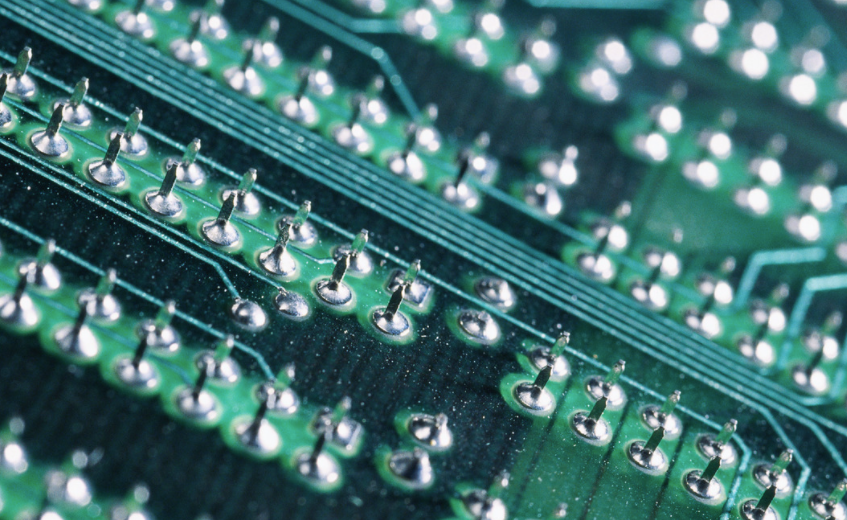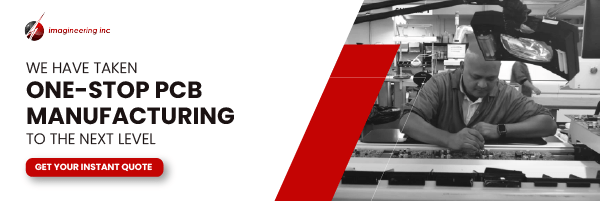Soldering is an essential step in the creation of printed circuit boards, particularly when applying surface mount technology. Solder acts as a conductive glue that holds these essential components tight onto the surface of a board. But when proper procedures aren’t followed, a solder ball defect can emerge.
There are a variety of different PCB soldering defects that can emerge during this phase of manufacturing. Unfortunately, solder balling can occur for a large number of reasons, and if not resolved, can have disastrous effects on a printed circuit board.
Being as common as it is, manufacturers have come to recognize many of the underlying causes that cause solder ball defects. In this blog, we outline everything you need to know about solder balls, what you can do to avoid them, and potential steps for their removal.
What is a Solder Ball Defect?
A solder ball is one of the most common reflow defects found when applying surface mount technology to a printed circuit board. True to their name, they are a ball of solder that has separated from the main body that forms the joint fusing surface mount components to the board.
Solder balls are conductive materials, meaning that if they roll around on a printed circuit board, they can cause electrical shorts, adversely affecting the reliability of a printed circuit board.
Per the IPC-A-610, a PCB with more than 5 solder balls (<=0.13mm) within 600mm² is defective, as a diameter larger than 0.13mm violates the minimum electrical clearance principle. However, even though these rules state that solder balls can be left intact if they are stuck on securely, there’s no real way of knowing for sure if they are.
How to Correct Solder Balls Before Occurrence
Solder balls can be caused by a variety of factors, making a diagnosis of the problem somewhat challenging. In some cases, they can be completely random. Here are a few of the common reasons solder balls form in the PCB assembly process.
Humidity – Moisture has increasingly become one of the biggest issues for printed circuit board manufacturers today. Aside from the popcorn effect and microscopic cracking, it can also cause solder balls to form due to escaping air or water. Ensure that printed circuit boards are dried properly before the application of solder, or make changes to control humidity in the manufacturing environment.
Solder Paste – Problems in the solder paste itself can contribute to the formation of solder balling. Thus, it is not advised to re-use solder paste or allow the usage of solder paste past its expiration date. Solder paste must also be properly stored and handled per the guidelines of a manufacturer. Water soluble solder paste can also contribute to excess moisture.
Stencil Design – Solder balling can occur when a stencil has been improperly cleaned, or when the stencil has been misprinted. Thus, trusting an experienced printed circuit board fabrication and assembly house can help you avoid these mistakes.
Reflow Temperature Profile – A flex solvent needs to evaporate at the correct rate. A high ramp-up or pre-heat rate can lead to the formation of solder balling. To resolve this, ensure that your ramp-up is less than 1.5°C/sec from average room temperature to 150°C.
Solder Ball Removal
Spray in air systems are the best method for removing solder ball contamination. These machines use high-pressure air nozzles that forcibly remove solder balls from the surface of a printed circuit board thanks to their high impact pressure.
However, this type of removal is not effective when the root cause stems from misprinted PCBs and pre-reflow solder paste issues.
As a result, it is best to diagnose the cause of solder balls as early as possible, as these processes can negatively influence your PCB manufacturing and production. Prevention provides the best outcomes.
Skip the Defects with Imagineering Inc
At Imagineering, we understand that experience is the best way to avoid the hiccups that come along with PCB fabrication and assembly. We offer best-in-class quality trusted in military and aerospace applications, and provide quick turnaround on prototyping and production.
Are you ready to see the Imagineering difference? Contact us today to get a quote on our PCB fabrication and assembly processes.


